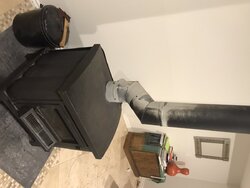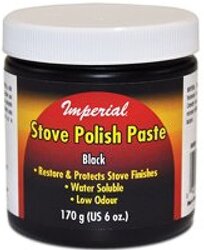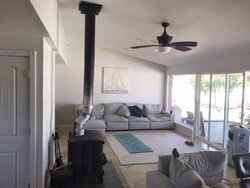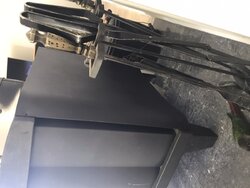What’s the best product to restore this stove pipe to black? I’d prefer not to spray and was considering ordering this paste/polish. Also the pipe has been this color since I bought the house, but is it from over firing and is it dangerous that the pipe angles so close to the stove? Finally how would I go about identifying the brand/model of the stove? Thanks!








